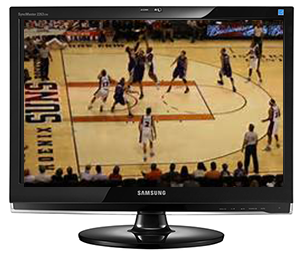- Offensive Techniques & Strategies

"Know the enemy and know yourself; in a hundred battles you will never be in peril.
When you are ignorant of the enemy but know yourself, your chances of winning or losing are equal"
Sun Tzu Wu, The Art of War, 450 B.C.
Bob KloppenburgA good scouting report is a "must" in successfully meeting and beating the many divergent game plans that teams often face in today's modern game. Hooptactics has developed a threefold scouting procedure designed to assist coaches of all teaching levels how to formulate an accurate, concise, and thorough game plan against each and every opponent to be faced. When passed on and interpreted, each player should be better prepared and far more confident in meeting whatever defense and offense the opponent is utilizing.
Since coaches have a tendency to have "tunnel" vision, it is a good idea to have your own team scouted and evaluated periodically by an outside source, especially early in the preseason. It is also wise to schedule some preseason games against teams that have similar styles of play to those that you are going to meet in conference play.


Step 1 - Pregame Scouting (Video)
Whenever possible, contact a prior opponent(s) of the team to be scouted. Find out what they thought was successful and what was unsuccessful. Find out what they would do differently. However, because of the differences in player personnel and playing styles, use this information as a basis of starting your own observations and game plan.
Do not take for granted what worked for them will work for you. Obtain a recent game video tape. Pregame video viewing will provide coaches with an understanding and overview of the soon to be faced opponent. Chart the opponent's offensive and defensive possessions separately. From these charts and video observations, a pattern of offensive and defensive strategies is established. Also, an overall philosophical view of the opponent tactics can be established, along with individual player strengths and weaknesses. Pregame video viewing should provide coaches with an excellent initial understanding and overview of the opponent they will soon face.
Offensive Video Review:
With the use of the remote control, chart each half court set play or pattern. Diagram exact movements of each offensive player by number, and when possible record offensive "calls" being used. Diagram each play only once and make a mark in the frequencies box when play is repeated. Be sure to record any organized fast break and early offense transitions. Follow the same procedure for baseline out of bounds, sideline out of bounds, and end of period plays. When finished viewing total all the offensive possessions. This offensive frequency breakdown chart will then be used for the actual live scouting phase.
View/Print Offensive Sets & Frequencies Worksheet
View/Print Sample Play Diagrams
How to read and Interpret Play Diagrams
Defensive Video Review:
Use a second viewing of the video tape to record defensive actions and frequencies for each possession. There can be several entries for each possession. For example, against the "UCLA " set would entail defending against high post rub, post ups, down screens, and side screen entries. When completed a defensive profile can be compiled. The defensive profile will then be verified during the actual live game scouting.
Personnel Video Review:
A third video viewing is used to compile individual player profiles. Just analyze the top seven or eight players. Note their physical attributes such as speed, strength, jumping ability, and aggressiveness. Determine their offensive and defensive roles as well as their strengths and weaknesses. Use a shot chart to note shot location for each player. If a shot chart is not available then manually record shot locations and types on court diagrams. When completed use this information to establish "How to play them " along with possible match ups.
View/Print Player Profile Worksheet


Step 2 - Live Game Scouting
The live game scouting phase confirms and reinforces the info gathered from viewing the video segment. "Seeing is believing" is, in fact, true, and scouting in person adds even more authentic info on the offensive and defensive strengths of your opponent-to-be.
Game scouting is charted similarly to the video viewing reports. Using the Offensive Plays and Defensive Profile summaries compiled from the video breakdowns, chart the frequency of each offensive and defensive possession. If a new set play or defense is seen be sure to diagram it. Confirm and add play calls. Verify and enhance each individual player profile as needed.
View/Print Offensive Sequence Log
Obtain copies of the final game statistics and season statistics, if available, before leaving the arena,
View/Print Sample Box Score Report
View/Print Sample Leaders Report
View/Print Sample Game Shot Chart
View/Print Sample Team Shot Chart & Scoring Breakdown
View/Print Sample Individual Composite Player Shot Charts
View/Print Sample Player Shot Chart & Scoring BreakdownVideo and live data results are then compared to formulate the most used offensive sets and defensive scenarios as well as individual player profiles to help team members prepare for their individual assignments. Brings together all of the relevant data leads to an educated and well thought out game plan.


Step 3 - Organizing and Creating the Final Report
Find a quiet location and review all of your video and game charts along with any notes. After studying them carefully formulate a game plan and prepare your final written report. This final report should include the following:
Offensive Overview
In a brief paragraph give an overall view of the team's offensive philosophy, main emphasis, and priorities. Are they Semi-Control team(run when available, but do not force), or a Control team (use the clock to get high percentage shots on every possession), or a Transitional team (all out running game with quick shots)? Analyze and list their offensive strengths ("Thumbs Up") and weaknesses ("Thumbs Down").
Defensive Overview
Summarize the team's overall defensive concepts. What style of defense do they deploy? Packed-in Man? Pressure Man? Zone? Extended Pressure? Do they disrupt or trap? Do they play soft or tough. Analyze and list their defensive strengths ("Thumbs Up") and weaknesses ("Thumbs Down").Personnel Overview
Provide a brief description and evaluation of each player's physical attributes, offensive and defensive strengths and weaknesses, along with their offensive and defensive roles. Add recommendations on how to play them. This section of the report should be combined with the team's depth chart, most used lineups, substitution pattern, and player rankings on the final written report.
Playing Them Smart (Final Game Plan)
"Playing Smart" is a plan of attack that alerts and enlightens, giving teams a real edge-up on each and every opponent throughout the season. It means that you are taking advantage and implementing the valuable knowledge gained from video and live game reviews in a variety of ways:
- the coaching staff plans practice sessions built around the most frequently used strategies, strengths and weaknesses of the coming opponent, and overall game philosophy.
- each player receives and reviews their game plan report on the most immediate opponent-to-be.
- each player gains a working knowledge of strengths and weaknesses of the opposing player(s) that they will be matched up against.
- players will be prepared for end of game situations, such as knowing who and who not to foul.
It should be comprised of a brief description of the keys to winning. Address the opponent's overall offensive philosophy, defensive concepts and player match ups. On offense, indicate what defenses and scenarios to expect, and how to attack them. Specifically, what plays or options should be effective against them. Defensively, recommend how to defend their main offensive sets, transitions, out of bounds as well as their "go to" sets such as isolations, screen and rolls, and post-ups. Be sure to provide secondary recommendations in case the primary scenarios are not effective.
View/Print Sample Final Scouting Report
© 2026 HoopTactics All Rights Reserved.
